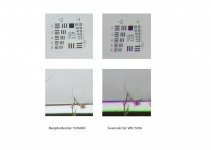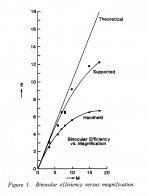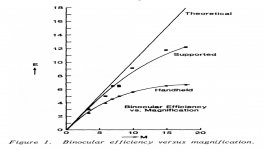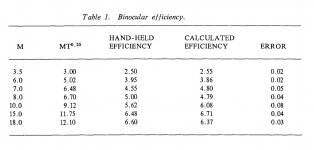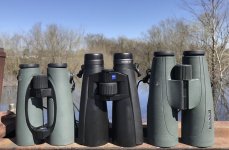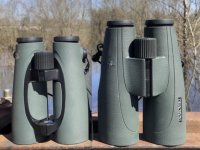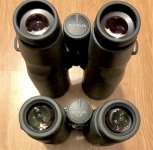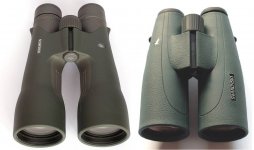"There is some CA visible if you look for it on high contrast subjects, even in the middle of the field. I find this no worse than other so-called HD lens class glasses. They are not apo. There is more CA off axis. I don’t know if the 12x is any better, however. And in practice—looking at birds—this has not been an issue. Contrast is very high and color is natural...identical balance to the 8x."Mac, I pondered the same choice a few weeks ago and without the benefit of a first-hand demo, I picked the 15x because:
1. I knew that even 10x glasses are too hard to hold steady enough to get much more detail handheld than 7x or 8x, so I decided to go big or go home, and tripod mount for high magnification.
2. Years ago, I had 900g+ 7x42 SLCs that were magnificent but the weight was too great for all day around my neck. Won’t make that mistake again.
3. The 12x is a terrific compromise for hunters looking for a single optic over 10x around the next and 15x in the pack. Not my situation.
4. I am familiar with the 8x56 SLC and cannot fault it. Optics, ergonomics and fit and finish are great. I could estimate eye relief from the relative specs and knew I would be fine with my glasses.
5. The SLC Swarovski tripod mount is excellent if expensive. The ELs have a design flaw in my view that they lack this important feature. I didn’t like the idea of modding $2800 binoculars with third-party pins without having at least trying it out first.
6. The AK prisms of the SLC have a bit higher transmission, always welcome.
7. I had concerns about the Field Pro strap connectors being too close to the focuser on the 12x and chafing my hand. SLC doesn’t have that problem for sure.
8. SLC is less money, but I am going broke with all these savings!
The main downsides to the 15x I have found so far are minor:
1. Close focus isn’t as comfortable as the 8x56, probably because the exit pupil isn’t as big. Still good, but not as good as the 8x in that area. 12x might be better there. It can focus closer.
2. Focus is geared a touch too slow for my taste, but Swarovski probably has their reasons and if I tried other gearings I would agree.
3. There is some CA visible if you look for it on high contrast subjects, even in the middle of the field. I find this no worse than other so-called HD lens class glasses. They are not apo. There is more CA off axis. I don’t know if the 12x is any better, however. And in practice—looking at birds—this has not been an issue. Contrast is very high and color is natural...identical balance to the 8x.
Have fun with whatever you choose! They are marvelous binoculars.
If you get a chance try a pair of the Meopta Meostar HD 15x56. When I compared them to the Swarovski SLC HD 15x56 I saw almost no CA on-axis nor on the edge in the Meostar's. The CA control was better than the newer HD's Swarovski's. These pictures below are a comparison of Meopta Meostar HD 15x56 compared to the older non-HD SLC but it still shows the lack of CA in the Meostar.
"The most notable difference in aberrations was in the familiar color fringing of chromatic aberration. In this area the Meopta was noticeably better from the center field to the edge. While viewing the resolution chart, the resolution elements clearly showed fringing with the Swarovski while the Meopta showed near-perfect correction in this area."
https://www.rokslide.com/review-meopta-meostar-15x56-hd-binocular/
"The MeoStar shows a bright, sharp image with nice contrast and almost zero CA."
https://redirect.viglink.com/?forma...www.cloudynights.com/topic/5...iew/?p=7419055
Attachments
Last edited:




